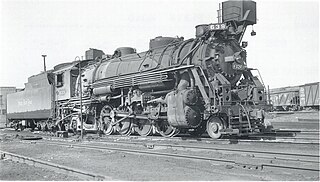
Under the Whyte notation for the classification of steam locomotives, 2-8-2 represents the wheel arrangement of two leading wheels on one axle, usually in a leading truck, eight powered and coupled driving wheels on four axles and two trailing wheels on one axle, usually in a trailing truck. This configuration of steam locomotive is most often referred to as a Mikado, frequently shortened to Mike.
The following lists events that happened during 1922 in South Africa.
The following lists events that happened during 1915 in South Africa.
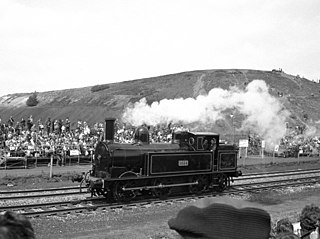
Under the Whyte notation for the classification of steam locomotives, 0-6-2 represents the wheel arrangement of no leading wheels, six powered and coupled driving wheels on three axles and two trailing wheels on one axle.

The South African Railways Class NG15 2-8-2 is a class of narrow-gauge steam locomotives.

A trench railway was a type of railway that represented military adaptation of early 20th-century railway technology to the problem of keeping soldiers supplied during the static trench warfare phase of World War I. The large concentrations of soldiers and artillery at the front lines required delivery of enormous quantities of food, ammunition and fortification construction materials where transport facilities had been destroyed. Reconstruction of conventional roads and railways was too slow, and fixed facilities were attractive targets for enemy artillery. Trench railways linked the front with standard gauge railway facilities beyond the range of enemy artillery. Empty cars often carried litters returning wounded from the front.
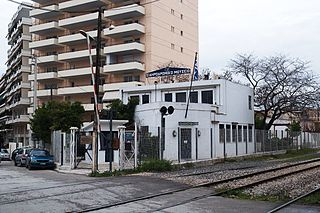
The Railway Museum of Athens, Greece, was founded by the Hellenic Railways Organisation (OSE) in 1978.
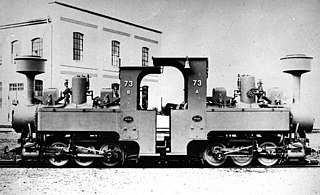
The South West African Zwillinge 0-6-0T of 1898 was a narrow gauge steam locomotive from the German South West Africa era.

Rail service in Namibia is provided by TransNamib. The Namibian rail network consists of 2,687 route-km of tracks (2017).

The history of rail transport in Namibia began with a small mining rail line at Cape Cross in 1895. The first major railway project was started in 1897 when the German Colonial Authority built the 600 mm gauge Staatsbahn from Swakopmund to Windhoek. By 1902 the line was completed.
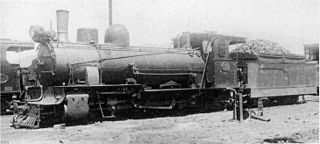
The South African Railways Class NG5 2-8-2 of 1922 was a class of narrow-gauge steam locomotives.

The South West African Class Hd 2-8-2 of 1912 was a narrow gauge steam locomotive from the German South West Africa era.

Usakos railway station is a railway station in Namibia serving the city of Usakos. It is part of the TransNamib railway network. The station building is dilapidated but passenger trains still stop at Usakos.
The Swakopmund–Windhoek line was a main 600 mm narrow-gauge railway line in Namibia. It was built in 1897 and operated until 1990 when the route name was changed.

The South West African Class Ha 0-6-2T of 1904 was a steam locomotive from the German South West Africa era.
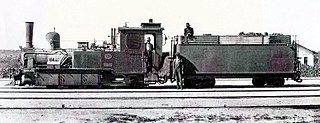
The South West African Class Hb 0-6-2T of 1905 was a narrow gauge steam locomotive from the German South West Africa era.

The South West African Class Hc 0-6-0T of 1907 was a narrow gauge steam locomotive from the German South West Africa era.

The South West African Jung 0-6-2T of 1904 was a narrow gauge steam locomotive from the German South West Africa era.

Two foot and 600 mm gauge railways are narrow gauge railways with track gauges of 2 ft and 600 mm, respectively. Railways with similar, less common track gauges, such as 1 ft 11+3⁄4 in and 1 ft 11+1⁄2 in, are grouped with 2 ft and 600 mm gauge railways.

The Walvis Bay 2-4-2T Hope of 1899 was a South African steam locomotive from the pre-Union era in the Cape of Good Hope.






















